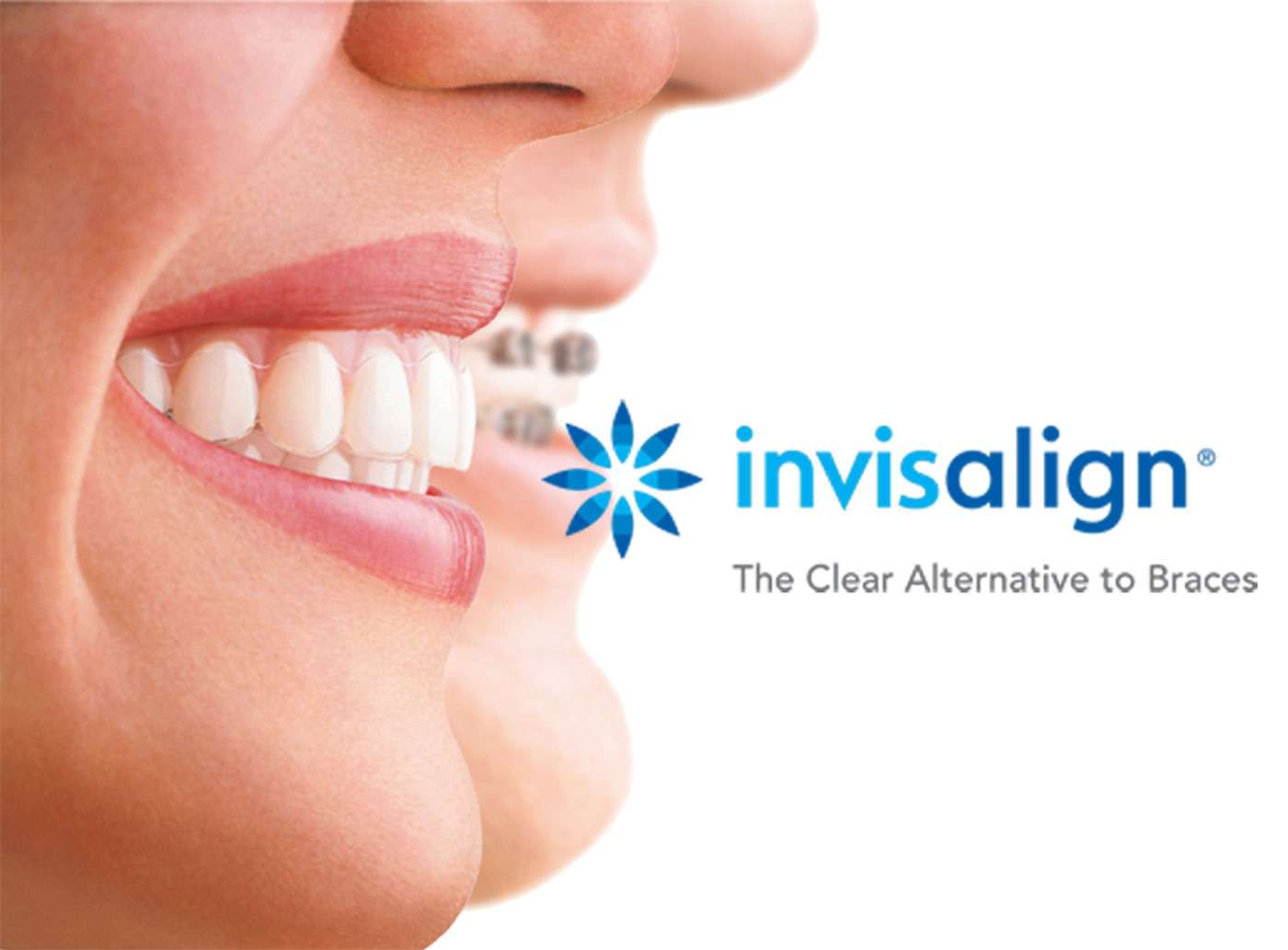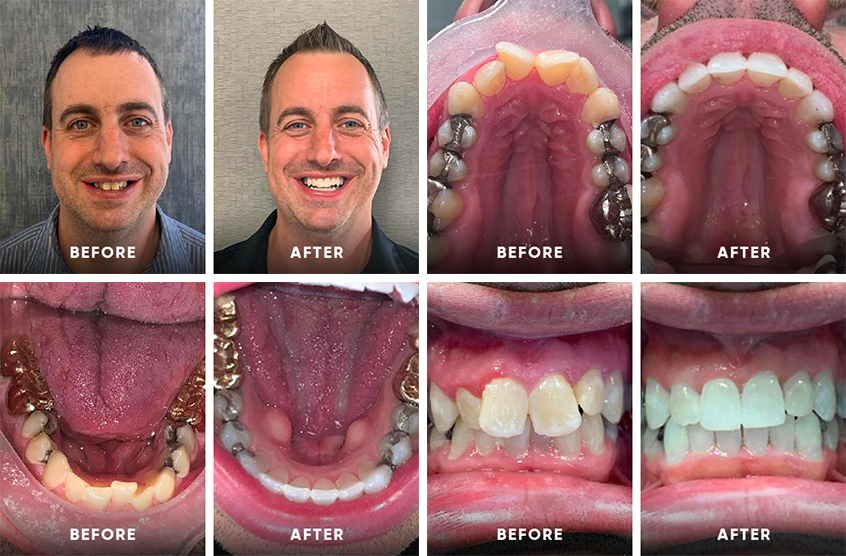Success Stories: How Invisalign Changed Lives and Improved Confidence
Success Stories: How Invisalign Changed Lives and Improved Confidence
Blog Article
Invisalign vs. Traditional Dental braces: Which Alternative Is Right for You?
When taking into consideration orthodontic therapy, the option in between Invisalign and standard braces provides a number of vital variables that warrant cautious examination. Invisalign provides a discreet choice with removable aligners, while traditional dental braces provide a more noticeable yet efficient service for severe misalignment. Each alternative incorporates unique advantages and downsides associated with aesthetic appeals, convenience, treatment period, and cost. Understanding these subtleties is essential for making an informed choice that lines up with your personal preferences and lifestyle. The inquiry remains: which option will ideal fulfill your orthodontic needs and assumptions?
Overview of Therapy Alternatives

In comparison, traditional dental braces include steel brackets and wires that are bonded to the teeth. This technique applies constant stress with time to attain placement. While reliable for complicated orthodontic problems, conventional dental braces call for regular gos to for adjustments and can posture difficulties in keeping oral health because of the problem of cleaning about brackets and cords.
Both alternatives have their advantages, and the selection typically depends upon particular dental conditions, lifestyle choices, and patient compliance. Inevitably, getting in touch with an orthodontic expert is critical for determining the most appropriate therapy plan tailored to individual requirements. Recognizing the nuances of each alternative can considerably influence the total success of orthodontic treatment.
Aesthetic Factors To Consider
A significant element influencing the selection in between Invisalign and traditional braces is the visual allure each therapy provides. Invisalign aligners are crafted from clear plastic, making them virtually invisible when used.
On the other hand, standard braces contain steel braces and cables, which can be a lot more obvious. While innovations in orthodontic modern technology have actually caused the development of smaller sized braces and colored elastics, standard braces still preserve a more conspicuous account. For some individuals, the exposure of braces may hinder them from looking for required treatment.
Eventually, the selection in between Invisalign and traditional dental braces may depend upon individual choices regarding aesthetics. People that prioritize discretion usually favor Invisalign, while those who are less worried concerning presence might select conventional braces. Comprehending the visual effects of each choice is essential for making an informed decision that aligns with one's way of living and choices.
Convenience and Convenience

In regards to ease, Invisalign aligners are removable, enabling clients to appreciate their favored foods without view restriction and maintain optimal oral hygiene. Cleaning and flossing are streamlined, as the aligners can be taken out throughout these regimens, whereas conventional dental braces call for mindful steering around braces and cables.
In comparison, standard dental braces demand regular adjustments, making them much less hassle-free for those with active routines. Overall, the comfort and convenience of Invisalign make it an appealing option for several people seeking orthodontic therapy.
Therapy Period and Efficiency
While both Invisalign and traditional dental braces work in remedying dental misalignments, the period of therapy can vary dramatically between the 2 choices. Typically, Invisalign treatment can take anywhere from 12 to 18 months, depending upon the intricacy of the case. The clear aligners work by progressively shifting teeth right into their preferred settings, and normal follow-ups with an orthodontist assistance ensure development continues to be on the right track.
In contrast, typical braces frequently need a longer commitment, generally ranging from 18 months to three years. This results from their set nature and using cables and braces, which can be much more reliable for complicated instances and severe imbalances (Invisalign). The treatment performance of typical braces is well-documented, as they enable specific modifications and better control over tooth activity
Eventually, the selection between Invisalign and standard braces might depend upon both the expected click this link therapy period and the details dental problems at hand. Consulting with an orthodontist is critical, as they can supply customized suggestions based on individual needs, guaranteeing the selected approach lines up with desired end results and timeframes.
Price Comparison and Insurance Choices
Cost plays a substantial role in the decision-making process for individuals thinking about orthodontic treatment, whether selecting Invisalign or conventional braces. On standard, the price of Invisalign arrays from $3,000 to $8,000, while conventional braces typically set you back in between $2,000 and $6,000. Factors influencing these expenses include the intricacy of the case, the duration of treatment, and geographical location.
Numerous dental insurance policy strategies supply partial protection for orthodontic therapies, however the specifics can vary commonly. Usually, traditional dental braces might be more often covered by insurance plans compared to Invisalign, which some insurers categorize as an aesthetic treatment.
Furthermore, numerous orthodontic methods supply adaptable layaway plan, making both treatment options a lot more easily accessible. Clients must ask regarding possible funding alternatives and discounts for upfront payments. Assessing the overall expense, including insurance benefits and payment plans, is essential for making a notified decision that aligns with both visual choices and spending plan considerations.

Conclusion
In summary, the option between Invisalign and typical look at here dental braces rests on several aspects, consisting of aesthetic choices, convenience, therapy duration, and cost. Invisalign offers a very discreet, removable option that promotes dental hygiene and nutritional versatility, while conventional dental braces may be more suitable for complex dental problems and commonly come with a reduced cost point. Eventually, consultation with an orthodontist is necessary to analyze private scenarios and determine the most ideal therapy alternative for attaining ideal oral placement.
When taking into consideration orthodontic therapy, the choice between Invisalign and typical braces offers numerous vital variables that warrant cautious examination.Contrasting Invisalign and typical dental braces discloses distinctive treatment options for orthodontic correction.While both Invisalign and traditional dental braces are efficient in remedying oral imbalances, the duration of therapy can differ substantially between the 2 alternatives.Cost plays a significant duty in the decision-making process for individuals considering orthodontic treatment, whether deciding for Invisalign or conventional braces.In recap, the selection in between Invisalign and typical braces pivots on several variables, including visual preferences, comfort, therapy period, and expense.
Report this page